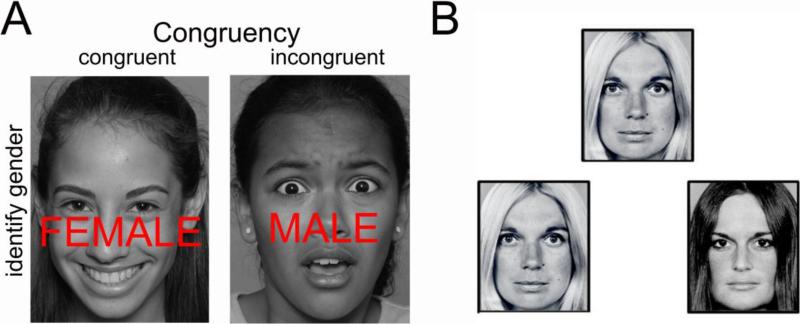Figure 1.
Experimental paradigms used to examine amygdala responses to social cues. (A) Face-categorization Stroop experimental task. Participants were instructed to indicate the gender of the face, while ignoring the overlying gender distracter word. Face stimuli included fearful and happy expressions. Trials varied such that word stimuli were either congruent or incongruent with the gender of the face. This enabled us to evaluate amygdala response while varying cognitive demand. (B) Face-matching task. Participants were instructed to indicate which of the two faces on the bottom of the screen matched the target face at the top of the screen. Trials were presented in emotion blocks (neutral, fearful, angry, and happy). Primary analyses focused on neutral facial expressions, given prior research showing that ambiguous faces engage variable amygdala response in youth. Gene effects on other facial expressions were also examined.

